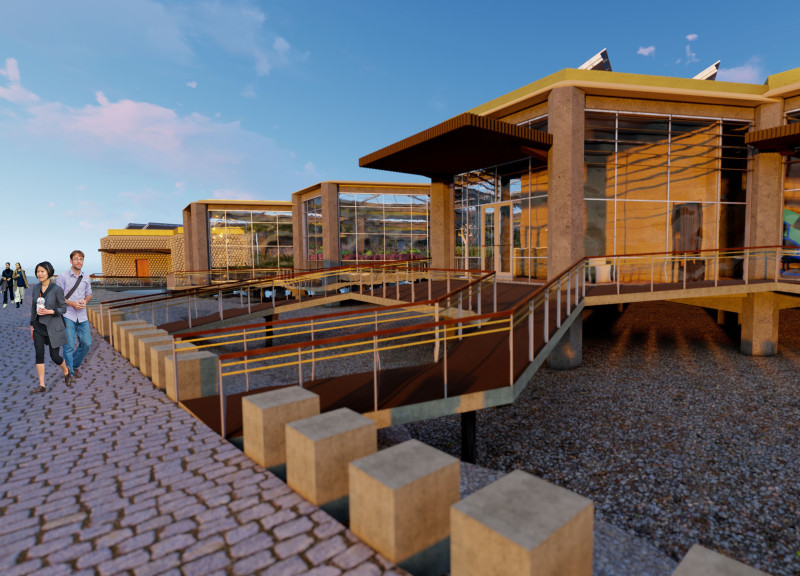5 key facts about this project
The design near Lake Myvatn in Iceland harmoniously combines agriculture and tourism in a way that respects the local environment. Positioned against a stunning landscape, the facility houses both a greenhouse and a restaurant, aiming to enhance the visitor experience while promoting learning about sustainable farming. Inspired by the structure of a beehive, the design reflects efficiency and a collaborative spirit, allowing for flexible and functional spaces.
Site Integration
The location is carefully chosen to take advantage of Iceland’s unique geothermal features and beautiful scenery, particularly the nearby Myvatn Nature Baths. This setting creates a connection between the buildings and nature, encouraging visitors to engage with the environment. Accessibility is a priority, with designated areas for parking and pathways designed for individuals with disabilities, ensuring ease of movement for all.
Architectural Composition
The structure comprises two main buildings: a central facility that includes administrative and multipurpose spaces, and an auxiliary structure focused on operational support and safety. The design blends Brutalist and Industrial styles, showcasing a straightforward and practical aesthetic. Staff areas are located close to the greenhouse for practical efficiency. A multi-purpose hall designed for various events features soundproofing to accommodate diverse activities without interference.
Sustainable Practices
At the heart of the facility is the greenhouse, strategically placed to maximize sunlight. It is equipped with essential systems like CO2 generators and waste recycling, underscoring a commitment to ecological efficiency. Sustainable practices are central to its operation. Solar energy is utilized to reduce reliance on conventional power sources. Rainwater harvesting supports irrigation, while organic waste is composted. Greywater is recycled for non-potable uses, further conserving resources.
Interior Experience
Inside, the layout encourages a connection between the dining areas and the greenhouse. Visitors can observe agricultural practices firsthand while enjoying their meals. This design promotes social interaction among guests, creating a friendly atmosphere. Large windows allow natural light to fill the space, enhancing the overall experience. Each design detail reflects the importance of local produce and sustainable practices throughout the visitors’ journey, creating an educational yet enjoyable environment.






















































